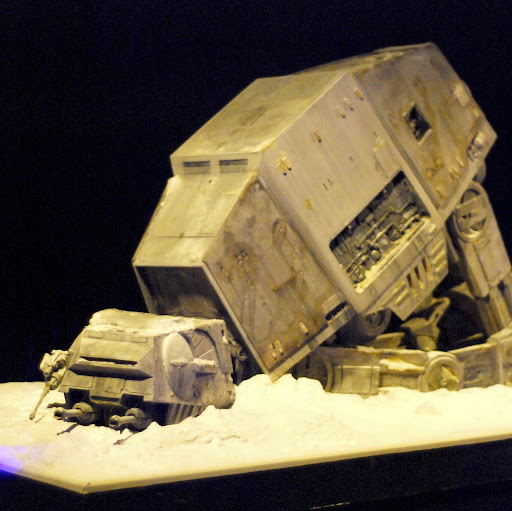Lee W Barker
age ~49
from Cedar Park, TX
- Also known as:
-
- William Lee Barker
- William L Barker
- William Barker Lee
Lee Barker Phones & Addresses
- Cedar Park, TX
- San Martin, CA
- Morgan Hill, CA
- Santa Clara, CA
- Kyle, TX
- 701 Blue Oak Cir, Cedar Park, TX 78613
Work
-
Position:Machine Operators, Assemblers, and Inspectors Occupations
Education
-
Degree:Associate degree or higher
Medicine Doctors

Lee R. Barker
view sourceSpecialties:
Internal Medicine
Work:
Johns Hopkins Bayview Internal Medicine
4940 Eastern Ave BLDG 301 STE 1100, Baltimore, MD 21224
(410)5503350 (phone), (410)5500491 (fax)
4940 Eastern Ave BLDG 301 STE 1100, Baltimore, MD 21224
(410)5503350 (phone), (410)5500491 (fax)
Education:
Medical School
Johns Hopkins University School of Medicine
Graduated: 1966
Johns Hopkins University School of Medicine
Graduated: 1966
Procedures:
Arthrocentesis
Wound Care
Wound Care
Conditions:
Benign Prostatic Hypertrophy
Bronchial Asthma
Cardiac Arrhythmia
Contact Dermatitis
Diabetes Mellitus (DM)
Bronchial Asthma
Cardiac Arrhythmia
Contact Dermatitis
Diabetes Mellitus (DM)
Languages:
English
Spanish
Spanish
Description:
Dr. Barker graduated from the Johns Hopkins University School of Medicine in 1966. He works in Baltimore, MD and specializes in Internal Medicine. Dr. Barker is affiliated with Johns Hopkins Bayview Medical Center, The Johns Hopkins Hospital and University Of Maryland Medical Center.
Name / Title
Company / Classification
Phones & Addresses
Sales & Mkting Mgr
Boxmaster Packaging Ltd
Packaging Materials
Packaging Materials
PO Box 339, Mailing Address, New Westminster, BC V3L 4Y7
(604)5214715, (604)5278514
(604)5214715, (604)5278514
Sales & Mkting Mgr
Boxmaster Packaging Ltd
Packaging Materials
Packaging Materials
(604)5214715, (604)5278514
Manager
Morgan Hill Unified School District
Elementary/Secondary School
Elementary/Secondary School
17940 Monterey St, Morgan Hill, CA 95037
PO Box 2550, Morgan Hill, CA 95038
(408)7795261
PO Box 2550, Morgan Hill, CA 95038
(408)7795261
Us Patents
-
Low Earth Orbit Satellite Constellation Stationkeeping Algorithm With Absolute Altitude Control
view source -
US Patent:6453220, Sep 17, 2002
-
Filed:Jan 31, 2000
-
Appl. No.:09/493595
-
Inventors:Lee A. Barker - San Jose CA
-
Assignee:Space Systems/Loral, Inc. - Palo Alto CA
-
International Classification:G05D 100
-
US Classification:701 3, 701 14-, 701 13, 701226, 701300
-
Abstract:An easily implementable satellite constellation stationkeeping algorithm for maintaining the relative positioning among satellites of a low earth orbit constellation with minimal maneuvering while maintaining the constellation altitude over the effects of atmospheric drag. The satellite constellation stationkeeping algorithm may be implemented as a system or method that uses atmospheric drag perturbations to extend the stationkeeping cycle of the satellites in the low earth orbit constellation while simplifying the implementation algorithm and performing minimal maneuvers. In an exemplary satellite constellation stationkeeping algorithm, a plurality of satellites or a ground station are configured with a controller that implements an absolute altitude control algorithm. The plurality of satellites are launched into a respective plurality of slots of a low earth orbit. The orbital position of each satellite is controlled using the absolute altitude control algorithm such that each satellite is allowed to drift to or near the edge of a positional box that defines its slot, and the altitude of each satellite is selectively driven to a fixed target altitude which is a function of position and drag, using one or more thrusters for example, to reverse the satellite drift in its slot.
-
Method For Optimizing Spacecraft Yaw Pointing To Minimize Geometric Pointing Error In Antenna Systems
view source -
US Patent:20040046691, Mar 11, 2004
-
Filed:Aug 22, 2002
-
Appl. No.:10/225972
-
Inventors:Lee Barker - San Jose CA, US
Xenophon Price - Redwood City CA, US -
International Classification:H04B007/185
-
US Classification:342/355000, 342/358000
-
Abstract:Payload performance is optimized by determining yaw trajectory employing a method which develops a mathematical expression to define the payload in terms of ‘n’ location(s) on the earth; determining the pointing error of the ‘n’ location(s); combining the error so as to product a single performance parameter and minimizing the value of the performance parameter by appropriately varying yaw.
-
Method And Apparatus For Generating Orbital Data
view source -
US Patent:62531255, Jun 26, 2001
-
Filed:Mar 1, 2000
-
Appl. No.:9/516927
-
Inventors:Lee A. Barker - San Jose CA
-
Assignee:Space Systems/Loral, Inc. - Palo Alto CA
-
International Classification:B64G 124
-
US Classification:701 13
-
Abstract:Satellite control data in the form of state vectors and state vector products are generated representing the position and geometric relationships of the space craft to the Earth, sun, moon, and specific locations on the Earth. These data is used to control attitude, SADA steering, antenna pointing, momentum upload, and Earth sensor intrusion. An onboard orbit propagator predicts the data and integrates the data into the various control systems for the respective function.
-
Using Reflected Solar Radiation Pressure To Provide Stationkeeping Maneuvering Of A Spacecraft
view source -
US Patent:61645974, Dec 26, 2000
-
Filed:Aug 5, 1999
-
Appl. No.:9/368980
-
Inventors:Lee A. Barker - San Jose CA
Benjamin Lange - San Francisco CA -
Assignee:Space Systems/Loral, Inc. - Palo Alto CA
-
International Classification:B64G 124
-
US Classification:244168
-
Abstract:Methods that provide stationkeeping maneuvering of a yaw steered spacecraft that orbits around a central body, such as the Earth, and experiences solar radiation pressure produced by the sun. The methods comprise the following steps. A spacecraft having a solar array is launched into orbit at a desired orbital location. Once the spacecraft is in orbit at the desired orbital location, a reflected component of the solar radiation pressure is caused to selectively apply a force to the spacecraft that moves the spacecraft to perform stationkeeping maneuvers. The reflected component of the solar radiation pressure may be caused to selectively apply a force to the spacecraft in two exemplary ways. In one embodiment, the spacecraft is yaw steered to follow a yaw steering profile so that the axis of the solar array is substantially normal to a plane containing the sun vector and nadir vector. The orbit of the spacecraft is then controlled to provide stationkeeping by applying an additional bias to the yaw steering profile.
-
Methods For Using Satellite State Vector Prediction To Provide Three-Axis Satellite Attitude Control
view source -
US Patent:62378767, May 29, 2001
-
Filed:Jul 28, 2000
-
Appl. No.:9/627482
-
Inventors:Lee A. Barker - San Jose CA
-
Assignee:Space Systems/Loral, Inc. - Palo Alto CA
-
International Classification:B64G 124
-
US Classification:244164
-
Abstract:Satellite attitude control methods for use during orbit raising operations to follow a predefined thrust trajectory that meets geometric constraints imposed by sensor and/or telemetry and control antenna fields of view while optimizing the sun angle on the solar array. The method uses low thrust electric propulsion for geosynchronous satellite orbit raising from a transfer orbit to the final geosynchronous orbit. In implementing the methods, a predefined thrust trajectory is generated that is designed to raise a satellite from a transfer orbit to a geosynchronous orbit. A direction-cosines matrix, or quaternion, is generated that aligns a thrust vector defined in the satellite body frame with the predefined thrust trajectory and rotates the satellite body about that vector. Attitude control is performed in accordance with the direction-cosines matrix to align the thrust vector defined in the satellite body frame with the predefined thrust trajectory and rotate the satellite body about that vector to optimize the sun angle on the solar array.
-
Method For Using Satellite State Vector Prediction To Provide Satellite Sensor Automatic Scan Inhibit And/Or Sensor Switching
view source -
US Patent:63176602, Nov 13, 2001
-
Filed:May 25, 2000
-
Appl. No.:9/578992
-
Inventors:Lee A. Barker - San Jose CA
Xenophon Price - Redwood City CA -
Assignee:Space Systems/Loral, Inc. - Palo Alto CA
-
International Classification:G05D 100
G05D 300
G06F 700
G06F 1700
G06F 1900 -
US Classification:701 13
-
Abstract:A method for use on a satellite that automatically inhibits scanning of an Earth sensor to handle sensor intrusions by the sun, moon, or other celestial bodies. In implementing the method, a predicted state vector for the satellite, derived from an orbit propagator, is generated. An attitude profile for the satellite is generated. Then, the satellite state (predicted state vector) and attitude profile are processed to determine Earth, sun, and moon vectors in a satellite body frame of reference at any instant. The Earth, sun, and moon vectors are compared to the Earth sensor field of view and sensor field of view limit boxes to determine if scan inhibiting or Earth sensor switching should occur. The affected Earth sensor is inhibited or switched if an intrusion of the sun and/or moon into the field of view of the Earth sensor is predicted.
Resumes

Lee Ann Barker
view source
Lee Ann Barker
view source
Lee Barker
view sourceSkills:
Mims

Lee Barker
view sourceSkills:
Management
Sales
Leadership
Sales
Leadership

Lee Barker
view sourceYoutube
Myspace
Plaxo

Lee Barker
view sourceRedmond, Oregonowner, luthier at Barker Musical Instruments Past: owner, craftsman at Great Ned! Woodworks Professional woodworking for 23 years gave me the skills, curiosity gave me the followthrough, and wrist pain playing a bass guitar gave me the excuse to... Professional woodworking for 23 years gave me the skills, curiosity gave me the followthrough, and wrist pain playing a bass guitar gave me the excuse to explore a different way of making bass notes. The result is the Barker Bass.
Google, YouTube, www.barkerbass.com for the rest of the story.

Lee Barker
view sourceSenior Account Manager at Kerzner International

Lee Barker
view sourcePast: SAP Consultant at Druid
Flickr

Lee Ann Barker
view source
Lee Christy Barker
view source
Lee Christy Barker
view source
Lee S. Barker
view source
Christine Lee Barker
view source
Lee Barker
view source
Dna Lee Barker
view source
Allis Lee Barker
view sourceGoogleplus

Lee Barker
Work:
Kroger - Pharmacy Technician (2006)
Education:
Purdue University - Doctor of Pharmacy and Pharmaceutical Sciences

Lee Barker
Work:
Car trader

Lee Barker
About:
Host of "When Disaster Strikes" video series, Lee educates and advises in the area of preparedness.
Bragging Rights:
Hunter, Marksman, Climber... Military Veteran.

Lee Barker

Lee Barker

Lee Barker

Lee Barker

Lee Barker
Classmates

Lee Ellen Barker
view sourceSchools:
Dacula High School Dacula GA 1991-1995
Community:
Thanh Nguyen

Lee Barker
view sourceSchools:
Crestmont Elementary School Northport AL 1981-1988, Minor Elementary School Lilburn GA 1987-1988, Sweetwater Middle School Lawrenceville GA 1988-1991, Berkmar High School Lilburn GA 1991-1993
Community:
Thanh Nguyen

Lee Barker
view sourceSchools:
Cinnaminson High School Cinnaminson NJ 1986-1990
Community:
Alexander Mague, Carlos Bermudez, Diane Carty

Lee Bookhout (Barker)
view sourceSchools:
West High School Madison WI 1972-1976
Community:
Joel Collins

Lee Barker
view sourceSchools:
San Dieguito High School Encinitas CA 1960-1964
Community:
Donna Proctor

Lee Szalas (Barker)
view sourceSchools:
Newton Junior High School Surrey Saudi Arabia 1980-1983
Community:
George Gidora, Scott Baron, Ken Best, Kim Houghton, Gary Ens

Lee Barker
view sourceSchools:
Midland Trail High School Hico WV 1982-1986
Community:
Connie Kessler, Dotty Cales, Lisa Becker

Lee Barker
view sourceSchools:
Sepulveda Elementary School Torrance CA 1964-1968
Community:
Valerie Pointon, Cathy Gill, Kathrine Fisher, Marshall Vaughn
Get Report for Lee W Barker from Cedar Park, TX, age ~49













